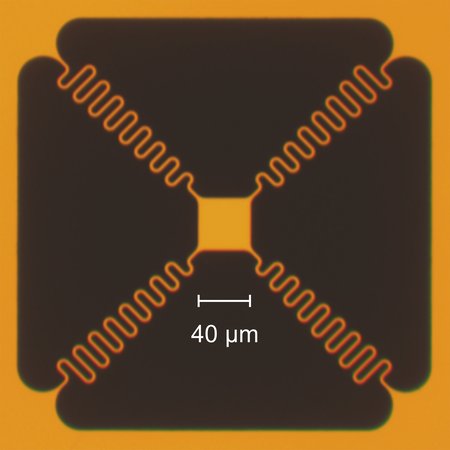Sailing has been a mainstay of human history for millennia, so it’s no surprise that scientists would apply it to traveling in space. Solar sailing, the most common version, uses pressure from the Sun to push spacecraft with giant sails outward in the solar system. However, there is a more technologically advanced version that several groups think might offer us the best shot at getting to Alpha Centauri – light sailing. Instead of relying on light from the Sun, this technique uses a laser to push an extraordinarily light spacecraft up to speeds never before achieved by anything humans have built. One such project is supported by the Breakthrough Starshot Initiative, initially founded by Yuri Milner and Stephen Hawking. A new paper by researchers at Caltech, funded by the Initiative, explores how to test what force a laser would have on a light sail as it travels to another star.
The general concept of pushing something with light seems simple enough, but the devil is in the details in terms of how it will operate in space. The laser and spacecraft have to synchronize over millions of miles. If either so much as slightly move the angle they are set to, perhaps because a micrometeoroid hit them, then the mission fails either because the craft ends up in a different part of the galaxy or the laser doesn’t provide enough power to get it there in a reasonable amount of time.
Testing is the way to ensure such a disaster doesn’t happen, but even understanding how the physics of a light sail will work over such large distances is difficult. So, the researchers at Caltech, led by postdoc Lior Michaeli and PhD student Ramon Gao, built a setup to test those physics.
Credit – Michaeli et al. / Caltech
Images provided as part of a press release to accompany their paper in Nature Photonics show a small square sample of light sail connected to a larger, hollowed-out square membrane by a set of four springs attached to each corner of the sample. What the images don’t do a good job of capturing is just how small the sample is —40 microns by 40 micros isn’t much compared to the 10 m2 for the final light sail design.
But it is a start, and the test rig introduced some interesting engineering challenges. The square is only 50 nm thick and made of silicon nitride. The springs are made of the same material, and the overall setup “looks like a microscopic trampoline,” according to the press release.
When the sample was subjected to an argon laser, it vibrated. The researchers knew that this vibration was caused primarily by heat from the laser, and they needed to differentiate the vibration caused by heating from the force applied by the light itself. To do so, they turned to an instrument commonly used in space exploration—an interferometer.
In this case, it was a type known as a common-path interferometer. In this setup, the two laser beams of the interferometer travel essentially the same path and, therefore, encounter the same environmental conditions. When one laser hits a moving object, and one hits a stationary one, the difference in movement can be subtracted to tease out the signal the experimenter is looking for—in this case, the radiation pressure of the laser itself.
One further step was to integrate the interferometer with a microscope and a vacuum chamber, which eventually allowed measurements down to the level of a picometer in terms of the sample’s displacement. They also collected information about the mechanical properties of the silicon nitride springs used to hold the sample in place.
Once the test setup was confirmed, the next step was to move the angle, like they potentially would in a real-world scenario. In this case, they only angled the laser beam but still noticed a significant loss of pushing power. They theorized that light hitting the edge of the sail diffracted, causing a loss of that power that would otherwise be used to push the sail.
This test setup will allow researchers to test how to avoid such a fate for the long-term light sail mission. They already have some ideas about integrating nanomaterials and self-correcting forces that would allow the light sail to automatically move back into its optimal path. But any such advancements are a long way off. Despite the long journey ahead, developing this test bed is a step (or maybe a laser push) in the right direction.
Learn More:
Caltech – The Pressure to Explore: Caltech Researchers Take First Experimental Steps Toward Lightsails that Could Reach Distant Star Systems
UT – What Should Light Sails Be Made Out Of?
UT – What’s the Most Effective Way to Explore our Nearest Stars?
UT – Lightweight Picogram-Scale Probes Could be the Best way to Explore Other Star Systems
Lead Image:
Image of a free-floating lightsail (left) and depiction of the test-setup used at Caltech.
Credit – Michaeli et al. / Caltech

